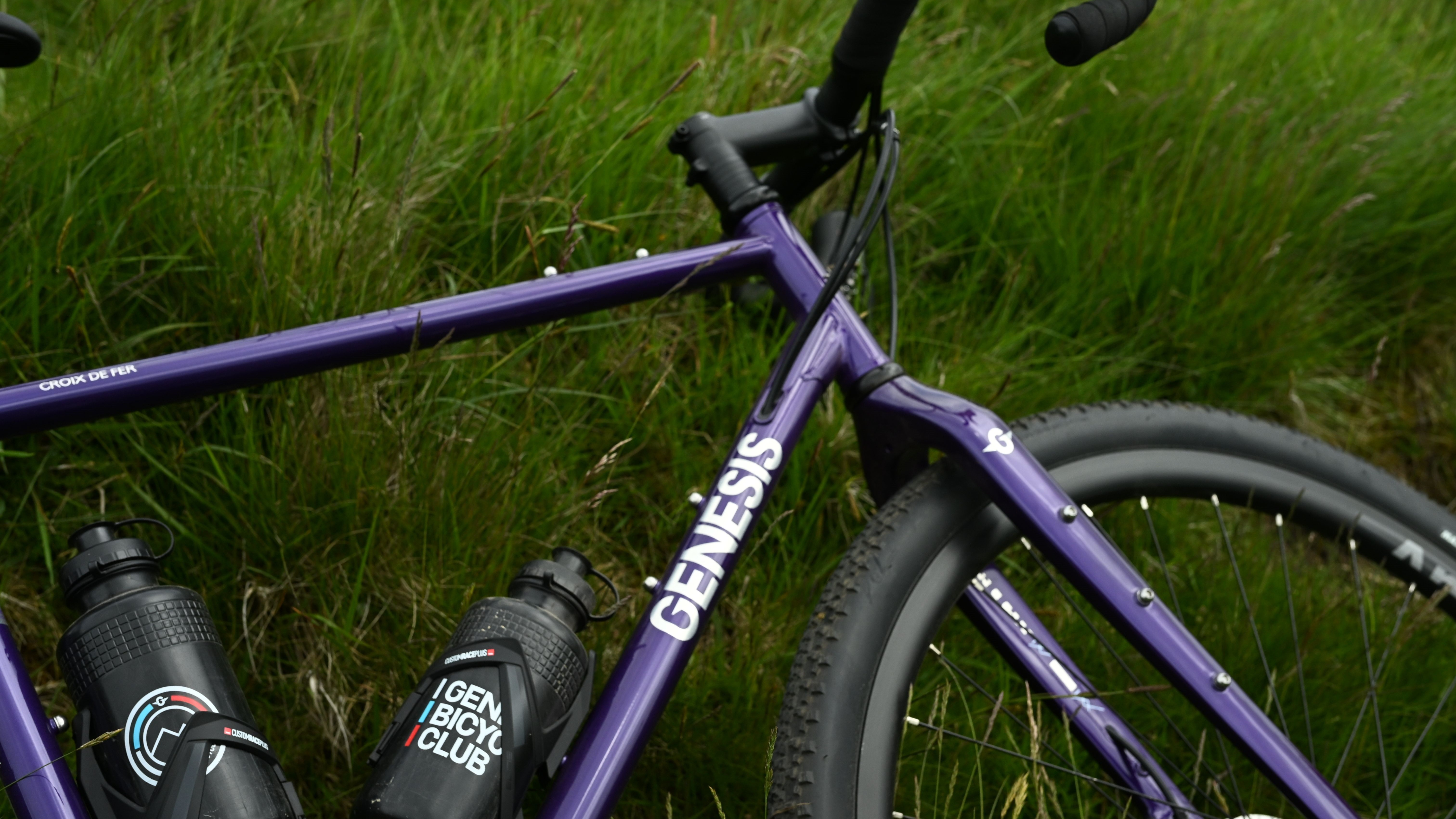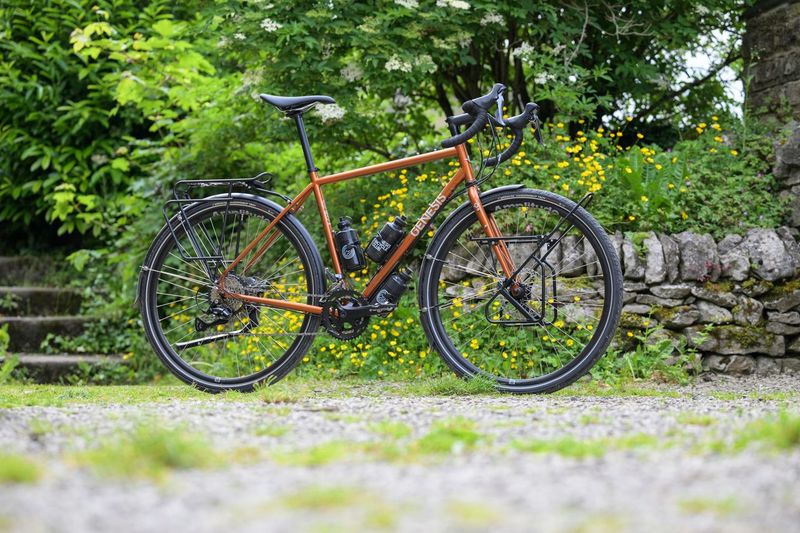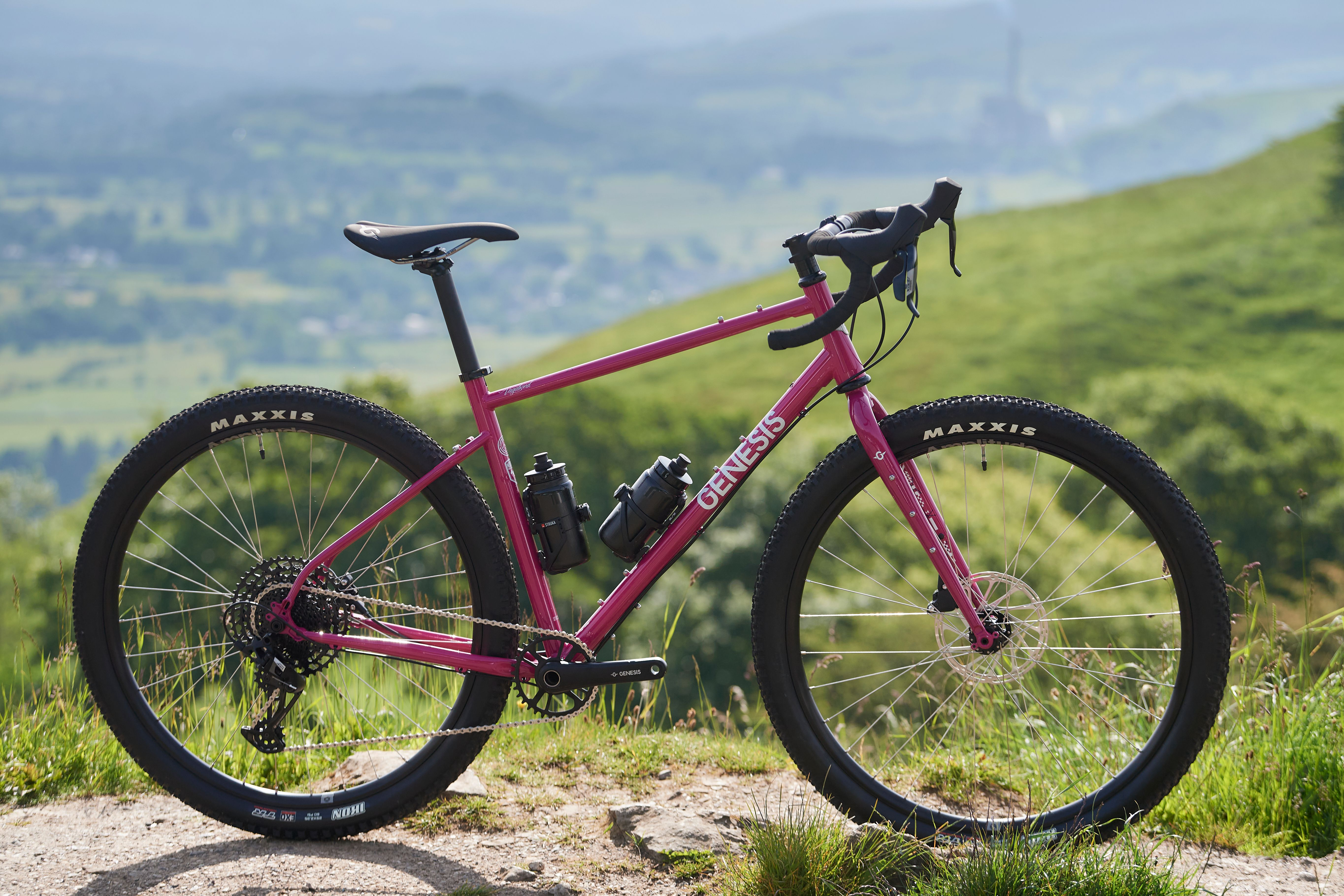Genesis kills off the triple chainset with new Croix de Fer, Vagabond, and Tour de Fer models
Wider clearance and dropped stays feature in biggest update to the Croix de Fer since it’s release

Today UK brand Genesis launches updates to three of its best-selling machines. The round-the-world capable Tour de Fer, the monster cross Vagabond, and perhaps most importantly the do-it-all Croix de Fer. The latter of these models could well make a good case for being the first gravel bike, and successfully made the jump from cyclocross machine, through a bit-of-everything phase, to where it lands today as an out-and-out gravel bike.
There is a suite of updates to go into, but if you want to know what two of the bikes are like to ride then head over to my new Croix de Fer and Vagabond first ride review. Will they justify a place among the best gravel bikes on the market? Further testing will reveal all, but for now let’s dive into the headline figures, build options, and the all-important updates.

New Croix de Fer

Given current trends in gravel bike design it should come as no surprise to see wider tyre clearances as the headline change to the venerable Croix de Fer. The new model can handle up to a 47mm tyre, and all full builds will ship with a set of 45c Maxxis Rambler tyres. Genesis states that the bike in general can clear a 45c tyre with fenders, though this does somewhat depend on the specific tyre and fender combination.
The top tube has been ovalised, in much the same way as that which is seen on both the Fairlight Secan and Strael. It is a design note that has been ported over from the brand's Volare road model in order to create a more racy look, but claims of increased lateral stiffness were also mentioned.
Again, ostensibly to modernise the silhouette, the chain stays have been dropped, but fortunately for fans of a pannier rack, they haven’t ditched the rack eyelets. In this regard, the dropout plates at the rear have also been made more sturdy for better load carrying. In eyelet terms, there are certainly more now on the latest model. A pair on the downtube and top tube respectively, three on each fork leg whether you opt for steel or carbon (the latter of which will net you a 900g weight saving), along with six on the top of the down tube and three on the seat tube. The aim is to make your bottle setup much more configurable, and it should be possible (frame size depending) to fit three separate water bottles inside the frame triangle, with one under the downtube if you need maximum hydration portage.
Seven complete bikes make up the range, with the frame constructed from either Genesis’ own Mjolnir chromoly or Reynolds 725, with three framesets available in either Reynolds 725, stainless 931, or titanium. Stainless and Ti framesets ship with a carbon fork, while the 725 has a steel one. Prices range from £1,199.99 / €1,399.00 to £2,799.99 / €3.299.00 for completes, and £899.99 / €999.00 to £2,699.99 / €3,199.00.
Updated Tour de Fer

The aim, according to Genesis, was always that the Tour de Fer be ‘round the world ready straight out of the box’. There are no drastic silhouette changes here, but fans of old-school drivetrains may well shed a tear at the news that the triple has been removed completely, with all Tour de Fer models now running 2x drivetrains.
The latest race content, interviews, features, reviews and expert buying guides, direct to your inbox!
Only four models make up the range, with the uppermost two featuring dynamo lighting routed inside the frame from Busch and Muller. The lower-tier models still have the routing ports within the frames should customers wish to set theirs up down the line. Cables and hoses are all still external, besides the dynamo cabling, for ease of maintenance, and the spoke holder on the chainstay remains for facilitating roadside wheel repairs.
Models start at £1,299.99 / €1,499.00 and go up to £2,199.99 / €2,599.00 and it’s available only as a complete machine.
New Vagabond

Finally, the Vagabond, the brand’s monster cross, go-anywhere bike has had perhaps the most significant and hardest-to-spot updates. The wheelbase is longer, with a slacker headtube, and tyre clearance has been upped to a whopping 2.35”. The stock steel fork is suspension corrected now, meaning should you wish to run a suspension fork then anything up to 40mm of travel isn’t going to affect the geometry unduly.
A boost spacing rear hub and mountain bike gearing means the Vagabond is about as close to a drop bar mountain bike as you can get before actually committing to a flat bar machine, but it also means that your replacement parts will be partially coming from the MTB world, so worth bearing in mind.
Only two full builds for the Vagabond are being released, at £1,799.99 / €2,149.00 and £2,299.99 / €2,699.00, with a frameset-only option priced at £899.99 / €999.00.

Will joined the Cyclingnews team as a reviews writer in 2022, having previously written for Cyclist, BikeRadar and Advntr. He’s tried his hand at most cycling disciplines, from the standard mix of road, gravel, and mountain bike, to the more unusual like bike polo and tracklocross. He’s made his own bike frames, covered tech news from the biggest races on the planet, and published countless premium galleries thanks to his excellent photographic eye. Also, given he doesn’t ever ride indoors he’s become a real expert on foul-weather riding gear. His collection of bikes is a real smorgasbord, with everything from vintage-style steel tourers through to superlight flat bar hill climb machines.